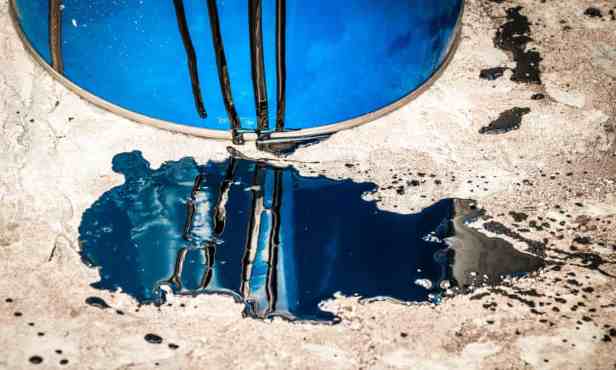‘Forever Chemicals’: The Hidden Threat From The Toxic PFAS on Your Shelf
By Anna Turns | The Guardian | September 14, 2021

Read the full article by Anna Turns (The Guardian)
“For months I’ve been watching the construction of our new garage. The breeze-block walls have been built, soffits are in place under the eaves, the concrete floor has been poured and slate tiles are being fixed on to the roof. Soon it will be time to render the exterior with sand and cement, to seal and waterproof the walls, to varnish the new fencing, and finish it all off with a shiny coat of paint.
That means a trip to the DIY store, where the shelves are full of marketing appeals. Glossy varnishes promise to colour wood for five years. Fence treatments are UV resistant and rainproof within half an hour and protect against rot. Masonry paint is no longer just about the colour: do I need pure brilliant or ultra-smooth, anti-mould or weatherproof?
Many of these items rely for their seemingly magical properties on PFAS (per- and polyfluoroalkyl substances), known as ‘forever chemicals’. This group of synthetic chemicals are used to prevent corrosion, reduce friction and make products waterproof and stain-resistant. Used in everything from cosmetics to food packaging, PFAS also show up in paint (as a binding agent and to give a smooth finish), wood lacquers (for repelling oil and water, and stain resistance) and sealants. They are used in the top layer of solar panels, artificial grass and firefighting foams.
PFAS’ incredibly strong carbon-flourine bonds mean these chemicals do not biodegrade. Renovations will not last for ever but PFAS persist and accumulate in soil, water, air, wildlife and our bodies. PFAS have been found in human breast milk and the blood of 97% of Americans. Exposure to some PFAS has been linked to fertility problems, changes in metabolism, and an increased risk of obesity and cancer – yet so much still remains unknown about their long-term consequences.
Eroded by the elements or dumped down drains, PFAS end up in the water system. Once there, remediation – removing the pollution – is impossible. Water-treatment plants can use activated carbon to filter out some, but not all, PFAS and other contaminants, but it is expensive and requires high-temperature incineration. Most of the chemicals from that silky smooth painted wall or rust-free railing ultimately end up in the ocean.
Globally, PFAS have been widely documented in rivers, lakes, wetlands and every ocean; they are on Mount Everest and in Arctic sea ice. But they are most prevalent where there are lots of people – in European cities’ river catchments, for example.
‘Wherever there is society, there’s use of PFAS,’ says Prof Ian Cousins, an environmental chemist at Stockholm University, who has studied this huge, diverse group of chemicals for 20 years. ‘PFAS are raining down everywhere – you’ll find them in rainwater wherever you live at higher concentrations than the environmental standards set for rivers.’
Cousins thinks this is a bigger problem than we have acknowledged. ‘We shouldn’t be releasing these man-made substances into the environment because they’re cycling around in water systems. Some transform into more harmful PFAS before coming back into air from the oceans, then raining down back on to land. The upstream solution is to not use these persistent chemicals in the first place.'”…
This content provided by the PFAS Project.
Location:
Topics: